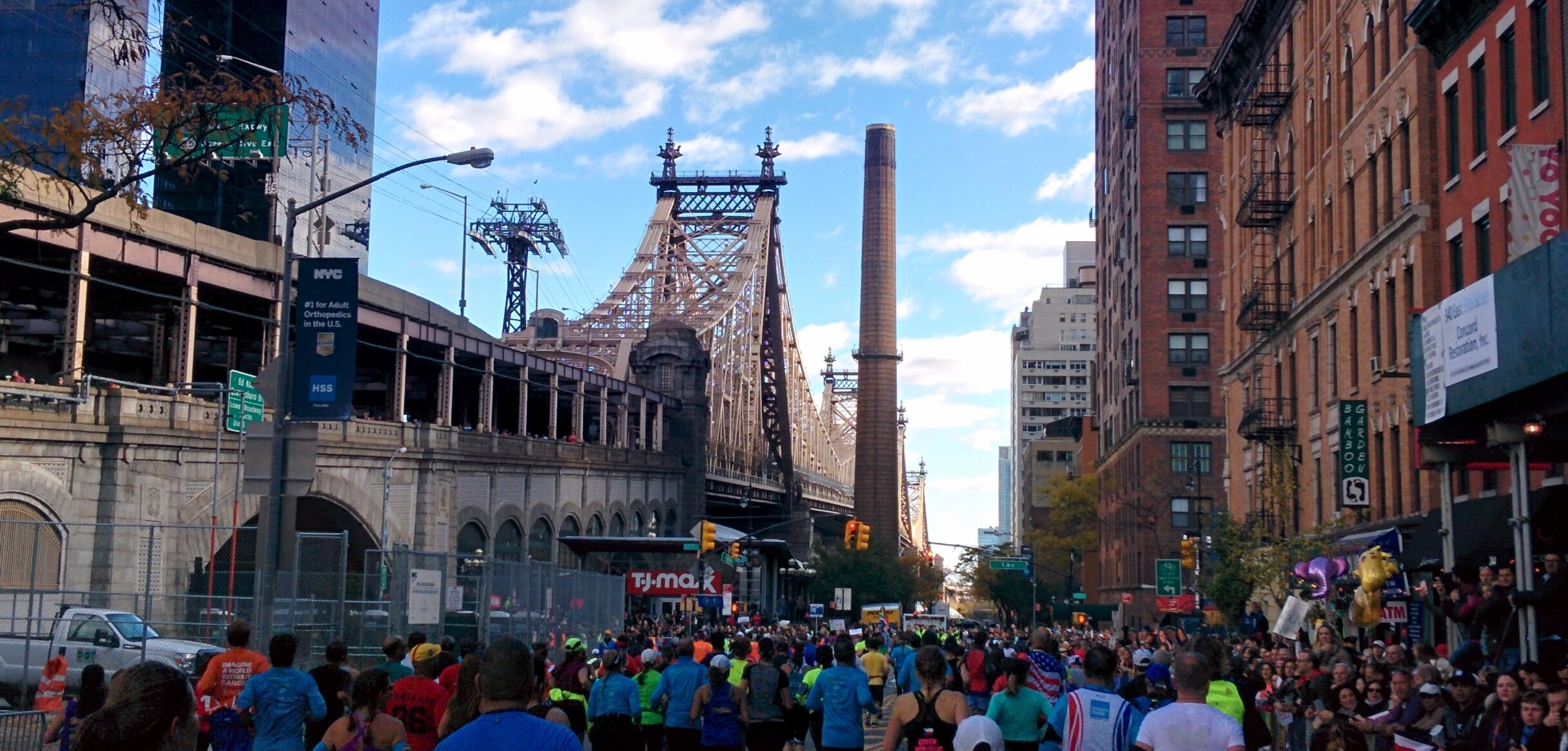News
NOW OFFERING RACE-SPECIFIC TRAINING PLANS!

As part of a broader series of posts that talks about specific sports, this week’s Coach Tip Tuesday is the fourth in a sub-series of posts about the IRONMAN distance of triathlon. The first three posts discussed the swim, the bike, and the run. This week, we’re going to dive into “The Extras” - the other things that are necessary to consider and implement in order to be successful at IRONMAN.
What is “success” at an IRONMAN? Ask three people this question, and you’re likely to get three different answers. I’m going to share my version of success at IRONMAN, which is this:
Success at IRONMAN is feeling good throughout the entire race, feeling in control for the entire race, being able to maintain stable and good form continuously throughout the entire race, and being able to move well the following day.
Many of us have seen the video of Julie Moss coming into the finish of the IRONMAN World Championship on ABC’s Wide World of Sports in 1982. She collapsed with just 15 feet to go, lost control of her bowels, and ultimately dragged herself across the finish line. While I can certainly appreciate her determination to finish what she started and finish the race, I cannot say that this was truly a successful race. She was dehydrated to the point that her body was literally failing her. This was actually a really dangerous situation that she was fortunate enough to recover from.
Again, while finishing the race is certainly something worth celebrating, what I want (call me selfish ;) ) for each athlete I work with or who I see at an IRONMAN is for them to feel strong, confident, and in control for the entire race. I don’t want them to just survive; I want them to thrive.
The truth is this: If you want to achieve true success at an IRONMAN and execute a race that showcases your potential, training for an IRONMAN is going to be a full-time job. (If you already work a full-time job, this means that you’ll be effectively working two full-time jobs.) Not only does the training itself take up a ton of time, but all of the activities that support the execution of the workouts take up a lot of time. When you add it all up, the total amount of time an athlete is going to spend preparing for an IRONMAN each week is going to be a lot - somewhere in the range of 20-40 hours per week.
Yes, you read that right. 20-40 hours per week. Again, this isn’t all training time (i.e. the time spent actually executing workouts). There are so many other elements that need to be accounted for; for the purpose of this conversation, I call these “The Extras:”
One of the most common questions athletes who are considering IRONMAN ask me is, “How much time will I need to train?” Occasionally, that question is phrased as, “This [insert number of hours here] is how much time I have available to train; will I be able to be successful at IRONMAN?”
When planning or budgeting time (and resources) for an IRONMAN, I find that many athletes focus too much on the actual training hours, and not enough on The Extra hours outside of training that are necessary to support the training. In addition to asking the question, “Do I have the time needed to train?” athletes should also ask the question, “Do I have the time to recover?”
That being said, the actual number of training hours is important to know and consider. So I’ll break down my recommendations for total weekly training volume based on the phases of training. These recommendations are based on my experience coaching athletes, seeing what actually works best (because as much as I’ve seen what works, I’ve also seen a lot of what doesn’t work over the years), and is a total time duration that includes the total duration for cardio (swimming, biking, and running) workouts only. These numbers assume that the athlete has been training for 1-2 years prior to embarking on their journey to IRONMAN and do not include any other activities such as strength training, proper warm-ups, mobility work, stretching, etc.
As you can see, there are ranges for each training phase. Determining the most appropriate weekly total volume of training is specific to each athlete, but one of the observations I’ve had over the years that provides a good reference point for appropriate training volumes is this:
Any given athlete should be completing a total weekly amount of cardio training (swimming, biking, running) in their Competition and Peak Training Phases that is equal to or greater than the total amount of time that they reasonably think that they will finish the IRONMAN in. (Notice that I said the time that the athlete reasonably thinks that they will finish in; this number can be very, very different from the time they hope or wish to finish in.)
So, if an athlete is expecting to finish an IRONMAN in 15 hours, then they need to be carrying at least 15 total hours in cardio volume over the course of each week throughout their Competition and Peak Training Phases (a total of 5-7 consecutive weeks). Carrying less volume than that will not develop the physical adaptations and durability that is necessary to sustain and execute a quality race.
In other words: if the athlete cannot complete that amount of cardio training, they can expect that their race day at IRONMAN will feel harder than it needs to and/or they will break down physically at some point in the race (usually in the run), which can lead to increased probability of injury, not to mention an exponential decrease in the probability of successfully achieving any time-based goal they may have set for themselves. In an ironic twist, athletes who have time-based goals (i.e. who want to spend less time executing an IRONMAN on race day and have a faster finish time) will need to increase their total training volume in order to be durable and strong enough to accomplish that goal.
IRONMAN has a 17-hour total time limit at most races (though a small handful of IRONMAN races do have a 16-hour or 16.5-hour total time limit). Think about it. If you expect to be able to keep moving and to keep making continuous forward progress for up to 17 hours in a single day, you need to build up the strength and durability in your body to accomplish that. While it is not a best practice to have an athlete carry that amount of volume in a single day until the race itself, asking an athlete to carry that amount (at least 15 hours) of cardio training volume in a week (i.e. spread out over the course of seven days) is not unreasonable given the event being trained for.
Saying that you need to train for at least 15 hours per week for several months in a row and then add extras on top of that may feel like a lot. It can truly be a hard number to wrap one’s head around, especially for age group athletes who are busy with many responsibilities in their lives! But as I think we have all experienced (no matter what type of race we have trained for in the past), workouts don’t actually take the amount of time they are planned for; they do take more once you add in all of the The Extras.
This amount of time (cardio volume + The Extras volume) may be unreasonable given what else you have going on in your life. And that is okay! This is why I’m really encouraging you to consider all of The Extras that are needed to achieve success and reach your potential in an IRONMAN. If you don’t have the time, you don’t have the time, and it may be a better (not to mention less stressful!) choice for you to consider a goal that isn’t IRONMAN and won’t require as much of your time to be successful.
The Extras that I listed above are all important pieces of The IRONMAN Training Puzzle. Again, they may look like a lot (and therefore feel overwhelming!) but considering that you will likely need to incorporate each of these elements into your life in order to successfully train for an IRONMAN is a really good thing to do before you embark on this path and invest a lot of your time, energy, money, sweat, and (probably) tears into a goal of this magnitude. (Your family and closest friends would probably appreciate it if you considered this, too. :) )
In total, The Extras listed above generally take another 1-2 hours per day. Some of this can be “absorbed” as “normal activities” (for instance, you would have to eat whether you were training for an IRONMAN or not), but some of them are truly Extras. Extra sleep. Setting out the gear needed for the next day’s workout. Stretching. Doing mobility work. Doing functional strength work.
Extra sleep is honestly probably The Most Important Extra, but neglecting or short-changing even one of The Extras listed above can cause issues. As we talked about in some of the other posts about IRONMAN, the distance of this race leaves little to no “room to hide”. Mistakes made training for this distance will be exponentially magnified due to how difficult an event like this is on the body (and mind).
Currently, there are 52 IRONMAN races held each year around the world. Accounting for each IRONMAN race that has taken place since the first IRONMAN took place in 1978, there have been approximately 1.2 million people (including repeat finishers) who have finished an IRONMAN. This means that less than 0.01% of humans have finished an IRONMAN.
I truly believe that anyone can not only finish, but reach their potential in an IRONMAN. With proper training and preparation, truly, anything is possible. But this isn’t a Disney movie; it doesn’t just happen by wishing on a star or having a dream in your heart (though it definitely starts there :) ). It takes thoughtfulness, planning, sacrifice, and hard work. To achieve something that is so rare requires equally rare behavior. To reach your potential at such a long, tough event requires even rarer behavior. I hope that this series of posts has given you some food for thought and helped shed some light on the things that are necessary to achieve that success.



































































































Have a question or ready to get your TRAINING started?
Fill out our Contact Form to the right and we will get back to you shortly!